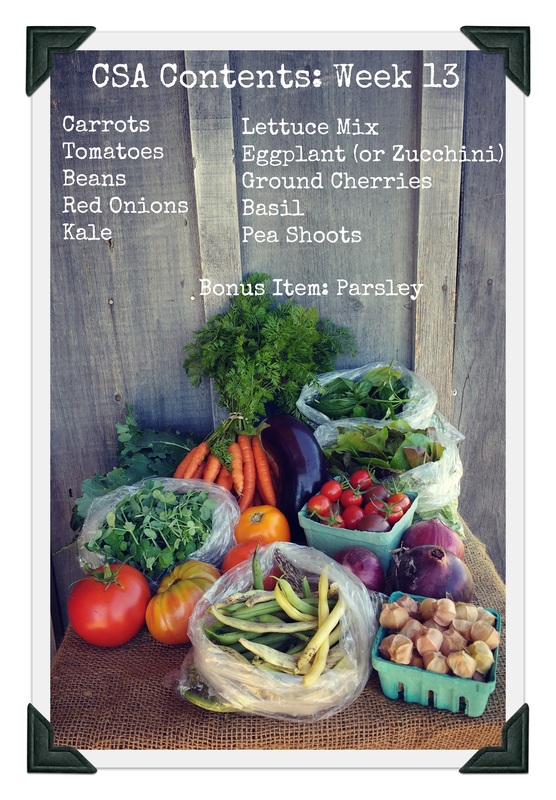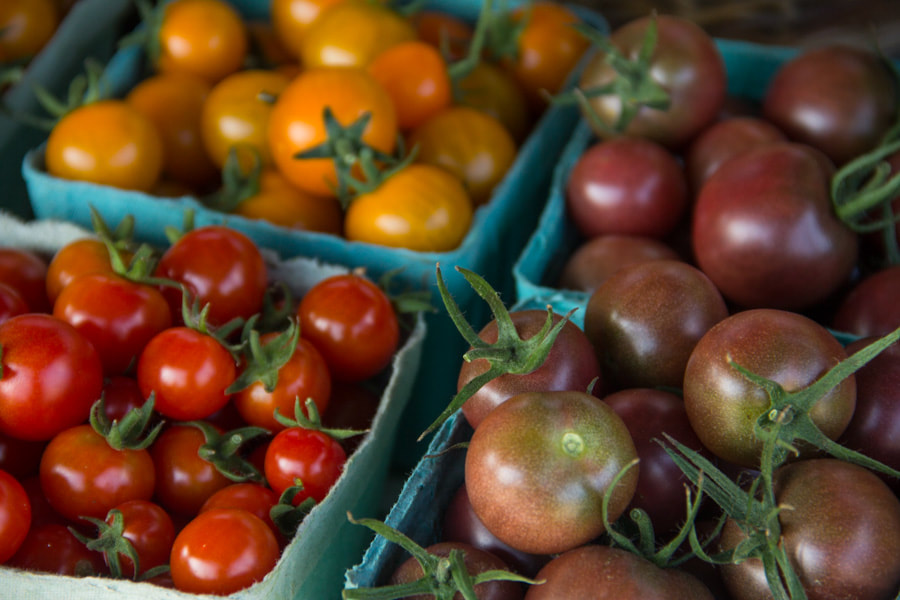|
I'm going to call this year 'The Year of the Tomato' (which sounds more positive than 'The Year of the Drought'). Our tomato plants are literally dripping with ripe tomatoes so everyone will be receiving double the quantity of tomatoes this week as compared to last. Pull out all your tomato recipes! The small shares will receive 1kg of tomatoes and the large will receive 2kg. If you wish to trade some in, 500g is the trade-in amount (I will put signage out to remind you of this...). For those of you who follow us on facebook or instagram, you will know that last week was an exciting week for us. We officially received our certified organic status on Friday! We made a commitment to farm organically from the very beginning with the intention to pursue certification once the farm had grown to a size that certifying made economic sense. After three full seasons under our belt, we felt that this year was the year to move forward on certification. While maintaining transparent and personal relationships with our customers has always been our primary method of explaining our farming techniques, we felt that certification was a great next step for several reasons. First and foremost, certification provides assurance to new customers who do not know us or our farm that we are farming in an organic manner. Second, certification provides us with official recognition for methods that we were using anyways. And finally, we support the organic movement and want governments of all levels to see the work we are doing. When we are farming organically but not certified, we are not counted in the same way on surveys and the census as a certified organic farm would be. In keeping with this exciting news I thought I would take some time to explain a little more about our certification and the process that we will go through each year to maintain this status. There are several certification organizations across Canada to which we could have applied and after reviewing each option we chose to apply to ProCert's Local Organic program. The Local Organic program is a new certifying program released in 2015 that was specifically designed for small-scale farms with less than 10 acres in vegetable or fruit production. This program is less expensive and has a simplified application and inspection process since both of these areas were identified as reasons why many small scale farms were choosing to forgo certification. Because the Local Organic program is only for vegetable and fruit crops, our animals are not covered under our certification. That said, we will always continue to raise our animals in keeping with the organic standards. As the animal side of our farm grows, we may choose to switch to ProCert's program that covers both plants and animals. All Canadian certifiers are bound by the rules and guidelines outlined in the Canadian Organic Standards, which were just updated in 2015. These rules cover everything from the inputs we use (seeds, soil amendments, cleaning agents, building materials, etc.) to how we manage our fields (tillage type and frequency, cover crops, bare soil, etc.) to how we harvest and store our produce. The first step in the certification process was to send our application to ProCert. In the initial application we had to answer detailed questions regarding our practices on the farm. Not only is the certifier concerned about what we are putting on the land, they also want to see that we have taken significant measures to prevent contamination from surrounding conventional farms. On our farm, we have a planted a spruce and popular windbreak around our entire 10 acres which, when grown, will reduce pesticide drift. We also maintain a required 8 meter buffer zone between our neighbour's land and any of our organic fields. And we have provided written notification to the local municipality indicating that we do not want any spraying done in the ditches along our property. The certifier also wants to make sure that our farming practices are ecologically sound. They want to see that we rotate our crops, use cover crops to rest and rebuild the soil, provide habitat for pollinators and other creatures (such as bird and bat boxes or unmowed ditches and buffer zones), and that we take stringent measures to ensure that we are not polluting waterways. In addition to answering these questions, we also provide the certifier with a map of the farm and all the plots, a 3 year history of each plot, and all our sales and labour records. Another significant component we must provide is a detailed list of all the inputs we use on the farm. Inputs include seeds, soil amendments such as compost or manure, cleaning supplies used on our harvest bins or equipment, and many other items. To back-up this list, we have to include a label or MSDS sheet for each item. Once the application was reviewed by ProCert, they sent an inspector to our farm. He walked the farm with us to ensure that we were meeting the organic standards. After the farm walk, he reviewed the administrative side of the farm. The most significant component of being certified organic is the paper trail we must keep for everything that is done or used on the farm. For example, I keep a daily activity log that tracks exactly what we do each day of the season. I also keep a harvest log which tracks exactly what was harvested each week in precise quantities. All our sales and labour records must be carefully recorded and shown to the inspector each year. Maintaining these sort of records is time consuming and requires that I dedicate several hours each week to administrative tasks, but they also make us better farmers and business owners. While I have always maintained a certain amount of records, I can already see how the detailed records from this year and each subsequent year will help to inform all the decisions we make on the farm. Going forward, we will renew our certification each year in the spring by providing all of the information mentioned above. As the Canadian Organic Standards change and evolve, we must also be willing to change our practices as needed. In your shares this week you will be receiving ground cherries. These cousins of tomatoes were popular last year with many of the members since they make great snacks for lunches (or eating on the way home from share pickup). As their name suggests, ground cherries are harvested once they have fallen onto the ground from the sprawling bushes they grow on. Their flavour is difficult to describe but some people say they have hints of pineapple, vanilla, and tomato all rolled into one.
Ground cherries, similar to tomatillos, are covered in a paper husk. When you pop off the husk, the sweet yellow fruit inside is delicious eaten whole. While you can toss these in salads, like you would cherry tomatoes, most people choose to just eat them as a snack. The drier the husk and the more yellow the fruit, the sweeter it will be. To enjoy your ground cherries at their sweetest, let them sit on at room temperature for a day or two before eating. Comments are closed.
|
Archives
February 2020
|



 RSS Feed
RSS Feed